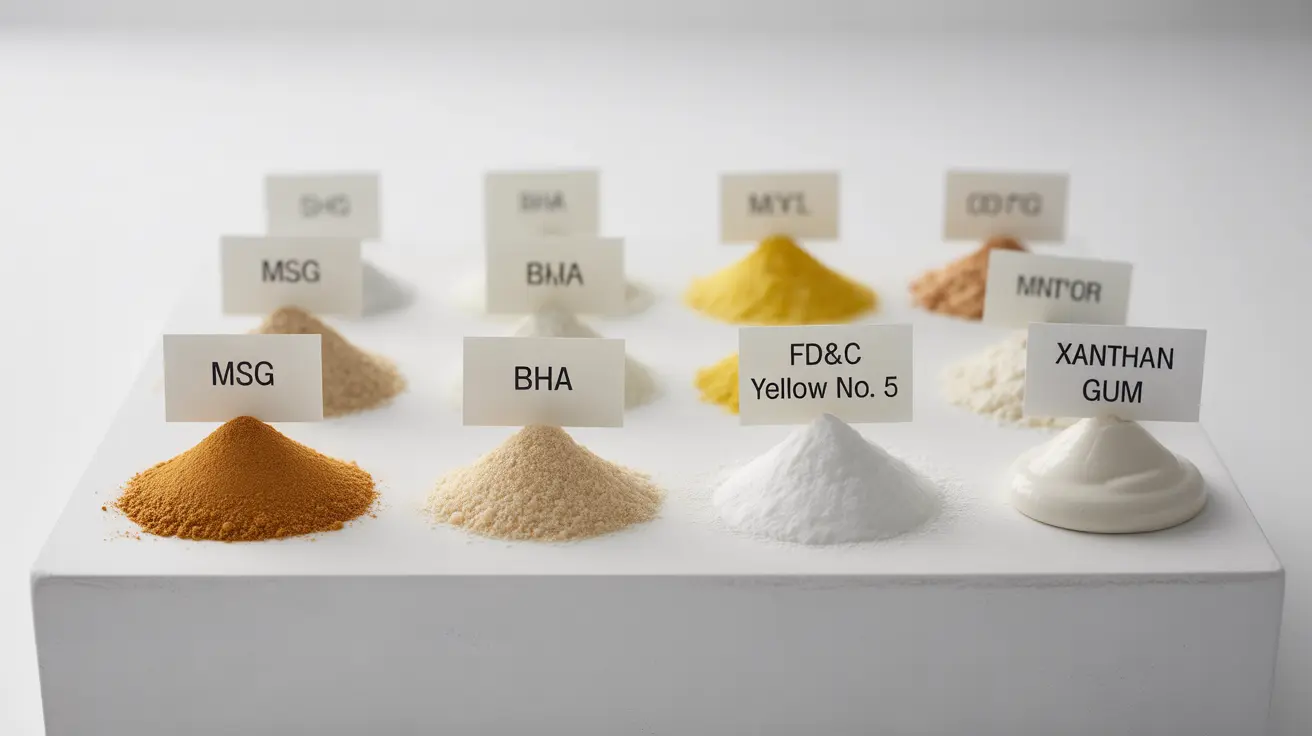Food additives are substances added to processed foods to enhance flavor, improve appearance, extend shelf life, or serve other functional purposes. While many additives have been deemed safe for consumption by regulatory agencies, understanding what these substances are and their potential effects on health is crucial for making informed dietary choices.
In this comprehensive guide, we'll explore common food additives, their purposes, potential health implications, and how to make informed decisions about the foods you consume.
Common Types of Food Additives and Their Purposes
Food additives can be categorized based on their primary functions in food products:
Preservatives
These additives help extend shelf life and prevent food spoilage:
- Sodium benzoate (prevents bacterial growth)
- Potassium sorbate (inhibits mold growth)
- Sulfites (prevents browning in dried fruits)
- BHA and BHT (prevents oils from becoming rancid)
Colorants and Dyes
Artificial food coloring agents are used to enhance or maintain food appearance:
- Red 40
- Yellow 5
- Blue 1
- Caramel coloring
Flavor Enhancers
These additives amplify or modify taste:
- Monosodium glutamate (MSG)
- Yeast extract
- Disodium guanylate
- Artificial flavors
Texture Modifiers
Substances that improve food texture and consistency:
- Carrageenan
- Xanthan gum
- Modified food starch
- Pectin
Health Considerations and Safety
While food additives undergo safety testing before approval, some may cause adverse reactions in sensitive individuals. Understanding potential risks is essential for managing your health:
Common Concerns
- Artificial colors and hyperactivity in children
- MSG sensitivity symptoms
- Sulfite allergies
- Digestive issues from sugar alcohols
Reading Labels Effectively
To identify food additives in products, look for:
- Chemical names
- E-numbers (European coding system)
- Common additive names
- "Natural" and "artificial" designations
Making Informed Choices
To minimize exposure to potentially problematic food additives:
- Choose whole, unprocessed foods when possible
- Read ingredient labels carefully
- Be aware of personal sensitivities
- Consider organic alternatives for frequently consumed foods
Frequently Asked Questions
What are common examples of food additives used in processed foods and what are their purposes?
Common food additives include preservatives like sodium benzoate for preventing bacterial growth, artificial colors like Red 40 for visual appeal, flavor enhancers such as MSG for taste enhancement, and emulsifiers like lecithin for texture improvement. Each serves specific functions in food processing and preservation.
Can artificial food coloring cause health problems like allergies or behavioral issues in children?
Some studies suggest a potential link between artificial food colors and behavioral issues in sensitive children. While not all children are affected, those with existing attention or hyperactivity issues may be more susceptible to these effects. Parents concerned about this should consider eliminating artificial colors from their child's diet.
What health risks are associated with additives like MSG, sodium nitrite, and trans fats?
MSG may cause headaches and other symptoms in sensitive individuals. Sodium nitrite, found in processed meats, has been linked to increased cancer risk when consumed in large quantities. Trans fats are known to increase heart disease risk and have been largely phased out of the food supply.
How can I identify and avoid food additives that may cause sensitivity or digestive issues?
Keep a food diary to track reactions, read ingredient labels carefully, and start with eliminating common problematic additives. Look for products labeled "free from artificial additives" or choose whole, unprocessed foods. When in doubt, consult with a healthcare provider for personalized guidance.
Are food additives such as artificial sweeteners and high-fructose corn syrup safe for regular consumption?
While approved by regulatory agencies, moderation is key. Artificial sweeteners are generally recognized as safe but may affect gut bacteria and metabolism. High-fructose corn syrup, while safe in moderation, has been linked to various health issues when consumed in excess. Consider natural alternatives and whole food options when possible.




